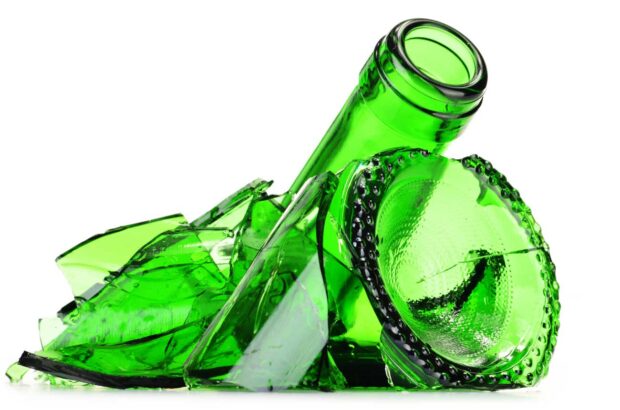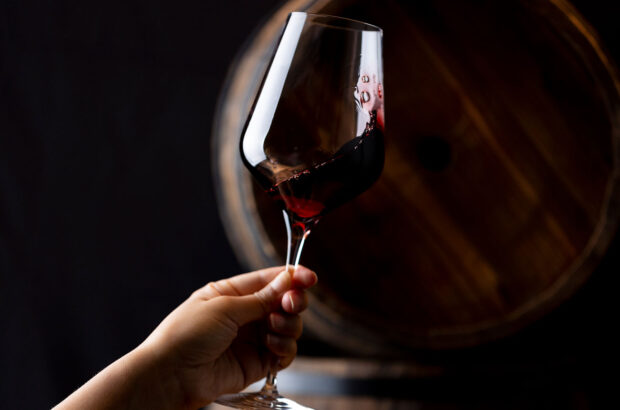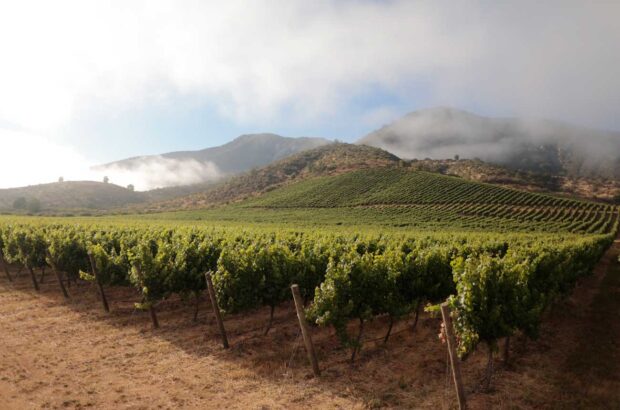Domaine de Chevalier has established itself among the top name of the Graves. Owner Olivier Bernard tells Margaret Rand how he did it
Olivier Bernard turned 50 the weekend before I went to see him. He gave me a copy of the menu for the evening, which ran to 16 pocket-diary-sized pages, complete with a passage from philosopher and academician Michel Serres on the importance of admitting your mistakes.
At the risk of depressing anyone planning their own 50th party, I’ll give you a taste of the wines.
With pâtés surprise d’Olivier (I didn’t ask what the surprise was) there was Domaine de Chevalier and Châteaux Haut-Bailly, La Mission Haut-Brion, Pape Clément, Figeac, Gazin and Nenin, all 1970. With carré de veau à l’estragon, Montrose, Grand Puy Lacoste, Latour, Mouton, Pichon-Lalande, Ducru Beaucaillou, Gruaud Larose, Léoville-Las-Cases and Talbot, also all 1970.
Then there were some 1990 Champagnes: Billecart Salmon Cuvée Nicolas François Billecart, Cristal, Dom Pérignon, Pommery Cuvée Louise and Veuve Clicquot La Grande Dame. Then some 1960 clarets: Brane-Cantenac, Chevalier, Clos Fourtet, Latour. Followed by seven 1960 ports and four from 1980, with a selection of 17 cheeses. Oh, and a melchior of Château Guiraud 2000, bottled in Bohemian crystal, with a spread of 10 different puddings. With coffee, there were three 1960 Armagnacs. It may help to have a négociant (Millésima) in the family, but even so…
Bernard has been at Chevalier for most of his adult life, but the changes he set in train when he arrived have only recently begun to show results. The changes he’s planning now are equally long term. It’s a good point from which to look both backwards and forwards.
He was born, as you might divine, in 1960, and intended to have a career in winemaking. His father’s family comes from the north of France, and for the past 400 years have been in the sugar business. From there to alcohol. From alcohol to brandy was a natural move and, indeed, the company of Lucien Bernard was, for 50 years, the largest brandy company in the world. It had a contract with the Ministry of Finance which, in turn, held the monopoly of brandy production; and it was when François Mitterand ended this monopoly in the early 1980s that the family decided to move into wine, and bought Chevalier in 1983. (Bernard’s cousin Patrick Bernard set up the négociant Millésima in the same year.) Bernard’s previous experience of wine consisted of a shop he set up for six months one summer in Arcachon when he was 18, and now and again sampling bottles from his father’s cellar (‘Sometimes he knew, sometimes he didn’t know.’) But his mother is from the Cruse family, so you could argue that it’s in the blood. In any case, his father asked him to take on Chevalier. ‘It was a challenge for me to say yes,’ he says.
Wise move
Probably the wisest thing he’s ever done was to ask the previous owner, Claude Ricard, to stay on at Chevalier. Ricard was 56 and didn’t want to retire; Bernard wanted continuity and needed a mentor. That’s when he learned his winemaking; and he intends that continuity to continue. ‘Talking of the next generation, I will stay on for some years,’ he says.
‘In winemaking, it’s very important to understand the philosophy of the property and the soil. Our philosophy is to make wine in the vineyard, not in the cellar: 90% of the choices are in the vineyard.
In the cellar you are just following the fruit.’
Bernard started making changes early on: Ricard had picked only the white grapes into small baskets; Bernard decided to extend the practice to the reds.
The first green harvest was in 1984. ‘In 1983, the quantity of the crop was too big,’ he says. ‘The 1983 was wonderful, but if I had to do it again I would do it at 48hl/ha, and it would have been even better. It’s easier to remake something 20 years later…
‘Now we do the green harvest better than we did then; we do it according to the vintage so, in a year like 1998, which was too cool, we do a green harvest early, and maybe twice.’
He started putting more pickers into the vineyard for the whites, too, and picking only in the mornings: ‘I saw the crop
from the mornings was better than that from the afternoons.’ But most of his focus was on planting.
Young vines
Much of the focus was on replanting, especially after a frost in 1985 which killed the lower-lying part of the vineyard (there’s only a few metres difference in altitude, but it was enough). In 1983 the estate was 18ha; now it’s 80ha. ‘For the first 20 years the vines were always too young, and it wasn’t so easy to make great wine… I started to blend the young vines into the grand vin a bit too early. Producing a litre from young vines costs just the same.’
He started using the young vines in the grand vin in 1993, and in 1996 decided that, in future, he would wait at least 20 years before doing so. ‘In the last five to 10 years, quality has increased to a level we have never seen.’
Certainly Chevalier red stands out at the en primeur tastings, not for its massiveness – it is never a massive wine – but for its combination of concentration and elegance – its wow factor. Bernard is not a fan of Parkerised wines: Chevalier, he says, maintains the real style of the Graves, along with Haut-Bailly and Haut-Brion. ‘Some others,’ he says, ‘are not in the style of Graves. And 10 years ago it was only “boom-boom”. Extraction and tannin are very well paid in Bordeaux.
‘The biggest challenge, with all the changes we’ve seen, is to stay with the same style on the same road. If I do a vertical [tasting] of the last 50 years, they are all on the same road. It’s not easy. Techniques are the easiest mistake [to make]. They’re easy to use, especially in this region. You can keep red grapes chilled for 10 days, or warm the vat to 40ºC at the end of fermentation, but I don’t like that. And whites are even more sensitive to techniques. But somebody who stops evolution is stupid.’
Evolution at Chevalier has certainly included must concentration, albeit with a light hand. ‘I know where I want to get in the next 20 years, and it’s even closer to the fruit. Not biodynamism in the strictest sense of the word, but something like it. Biodynamism is not the right solution for Bordeaux; it doesn’t work for [a plot of] 50ha.
‘The wines of the 1980s are different to the wines now, and they were different again in the 1960s and before; I have tasted many wines from the 19th century and they’re in a different style; and they were different in 1900 to 1880.’
Planning ahead
Pessac-Léognan (or what is now Pessac-Léognan) has shrunk and grown again over those years. At the end of the 19th century, says Bernard, it covered 5,000ha of vines. In 1975 it was down to 800ha; now it’s up to 1,600ha. It’s on the edge of the vast Landes forest that stretches to the Atlantic, and some properties go back and forth from pines to vines. Bernard reckons there’s probably another 150ha of top vineyard land currently planted with pines. He has already bought up some forest – 15ha, to be extended to 25ha, currently cleared and awaiting planting; when I saw him he was about to sign for another 18ha of uncleared land. And he knows of another 30ha plot, ‘but that’s work for the next generation’.
Not that all the new land will go into Chevalier. The 25ha he is preparing will eventually be a separate property with its own name and its own cellar. He may use the young vines in a second or third wine of Château de la Solitude (see box, right) but not in Chevalier. And there will be both red and white, but probably only 15% white. ‘Too much white is not good. The 2008 of Chevalier is still saleable, but not the 2005: it’s too old to sell.’
Which is odd since, at Chevalier, he never makes white wine to be ready in less than 10 years. Cool vintages will need 20. ‘The 2000 is good now, but the 2001 will be even better in 10 years’ time.’ It has few rivals in Bordeaux – Haut-Brion and Laville Haut-Brion aside – but while its price is notably higher than the red, it’s not as high as a Médoc of comparable quality. And the red remains a bargain. Bernard is adamant he doesn’t want either wine to become speculative, but it does seem underpriced compared to its peers.
I wonder about the reaction of his party guests: I doubt if they felt that Chevalier was out of its class.
Written by Margaret Rand







